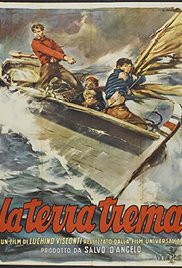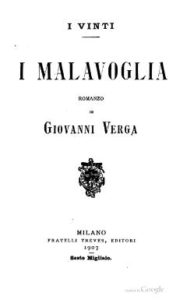La Terra Trema **** (1948, Antonio Arcidiacono, voices of Luchino Visconti, Antonio Pietrangeli) – Classic Movie Review 5716
Director Luchino Visconti’s documentary-style 1948 neo-realist masterpiece is centred on the day-to-day working and living existence of a fisherman, ‘Ntoni Valastro (Antonio Arcidiacono), his family and the people from Aci Trezza, a small Sicilian village near Catania. It is the Italian equivalent of Robert Flaherty’s 1934 classic Man of Aran.
This docufiction using the Sicilian language may be shakily acted by the entirely amateur cast, but it is beautifully photographed all on location by Aldo Graziati and Gianni di Venanzo, and it is heart felt and politically committed with its theme of villagers kept in poverty by greedy fish wholesalers – until the hero leads a revolt.
‘Ntoni convinces his family to mortgage their house to catch and sell their own fish, but a terrible storm ruins the family’s boat, starting a downward spiral for the family, leading them back into the clutches of the wholesalers.
Yes, with its focus on people united by one culture but divided by old rivalries, it is strongly politically committed and promoting change and reform, and indeed it was partly financed by the Italian Communist Party.
As it is made and played in Sicilian dialect, Visconti added a commentary spoken by him and Antonio Pietrangeli to help audiences in the rest of Italy to understand it.
Franco Zeffirelli was assistant director.
Visconti’s screenplay is based on Giovanni Verga’s novel I Malavoglia, which is the best known work by the Italian realist (Verismo) writer Verga (2 September 1840 – 27 January 1922). First printed in 1881, an English edition called The House by the Medlar-Tree, translated by Mary A Craig, appeared in 1890.
The film runs 160 minutes with a cut version at 90 minutes. Its title translates as The Earth Trembles. It is Visconti’s second film, following Ossessione.
© Derek Winnert 2017 Classic Movie Review 5716
Check out more reviews on http://derekwinnert.com




